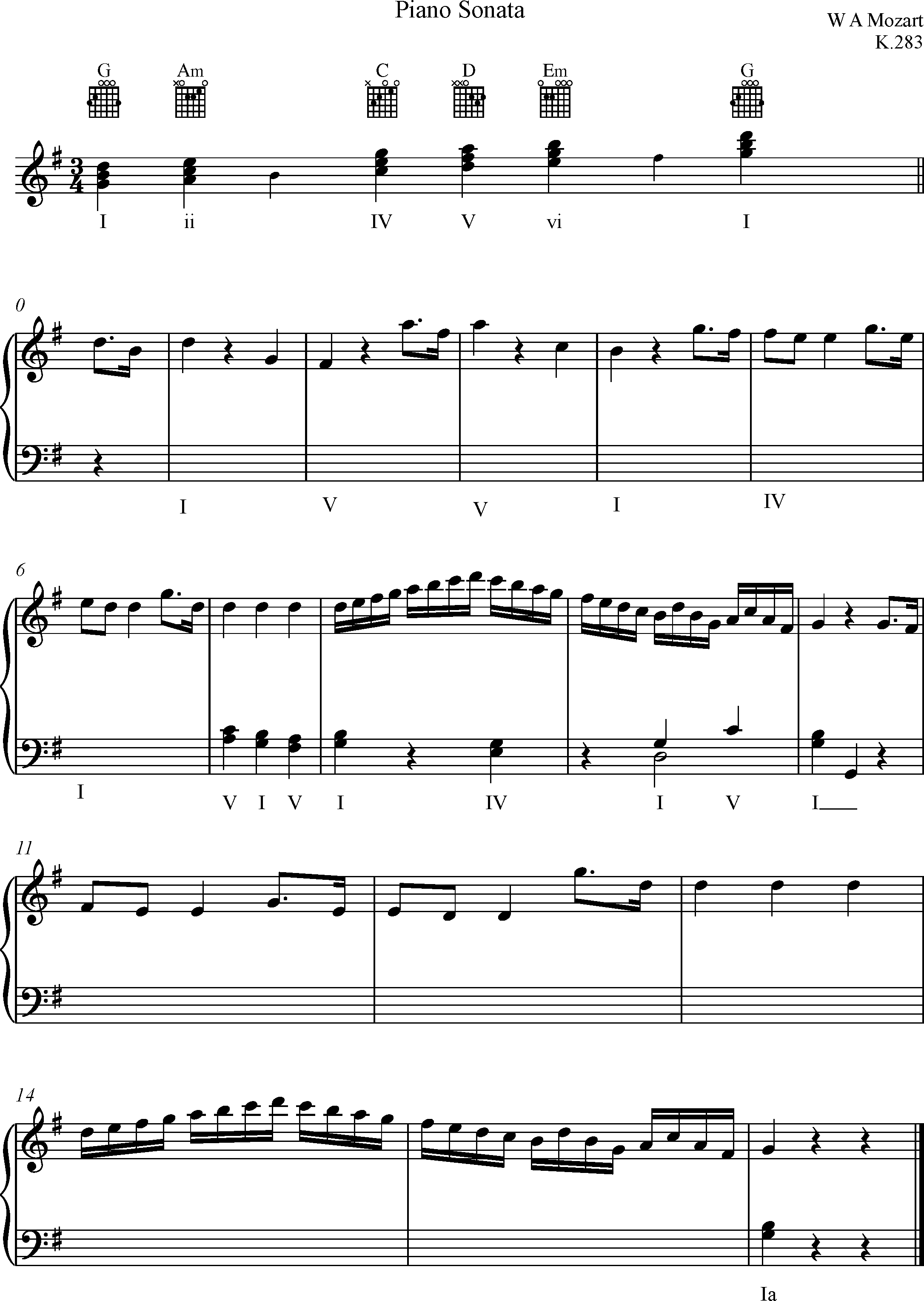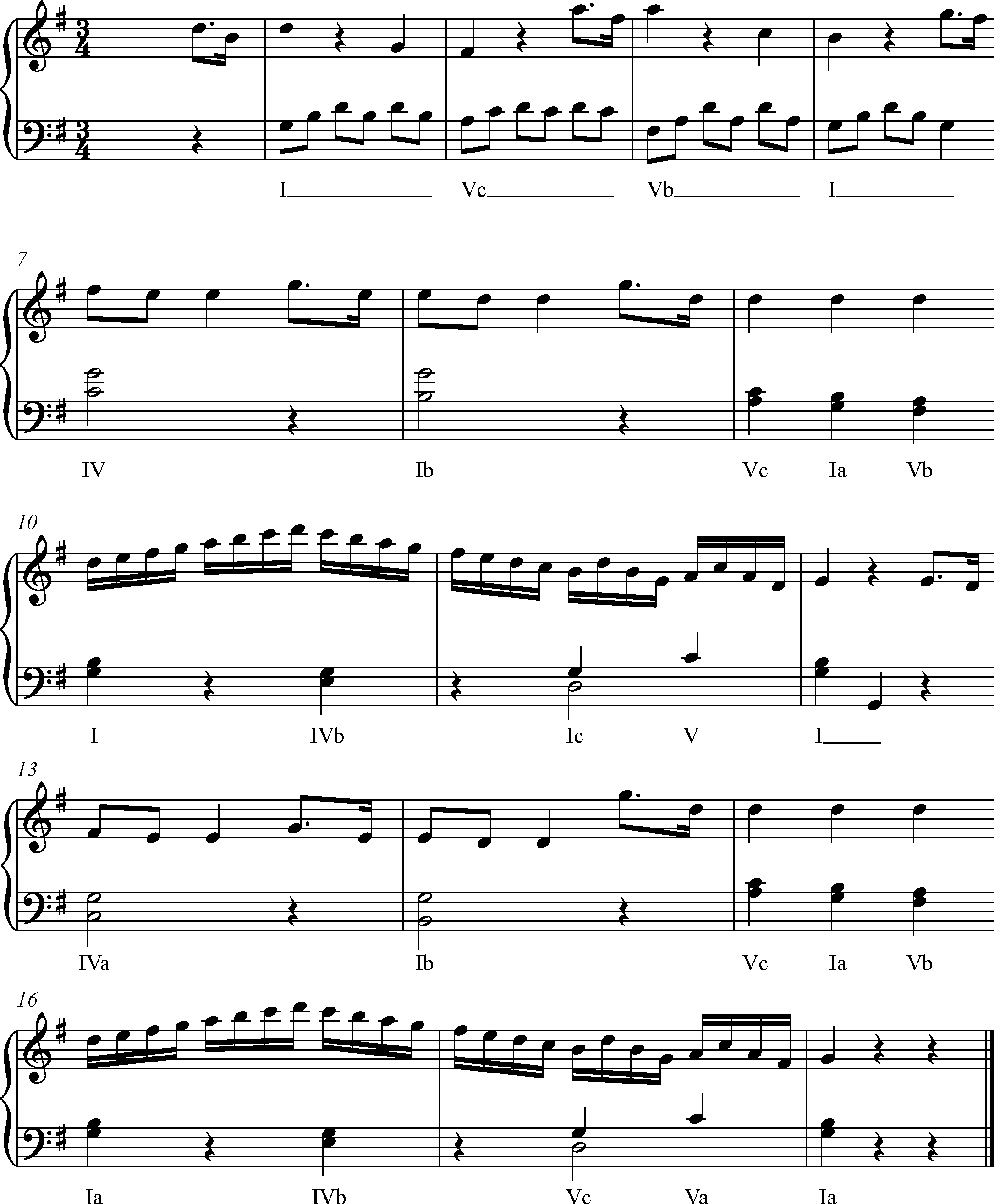A7 | Texture
- In this component you will learn how to vary the texture of your compositions. In previous components, chords were written as long rhythms (minims, semibreves) and block chords. You started to vary the bass line in A5: Secondary Chords.
- Creating a bass line that’s sturdy and interesting leads to contrast with the melody and therefore is a way of developing your composition.
- You will also be considering how to further develop your melodies by creating a theme and variations.
- Lastly, you will focus on the rhythms that composers employ in their melodies.
Look at the quotation below (figure 1) from the work of Mozart – the Sonata for Piano (K.283) in G major. The chords used by Mozart have been annotated below the stave. Complete the bass part by adding chords including:
- primary chords
- secondary chords
- chords in root position
- inverted chords
- cadences.
Bars 7-10 have been included as well as the last chord, this is, the tonic chord in bar 16. The chords in bar 93-10 demonstrate a perfect cadence in G major.
Fig. 1

Now look at how Mozart filled the bass part with the same chords.
Fig. 2

Fig. 3

Notice the difference between the block chords and the quaver movement in Mozart’s work.

Notice how Mozart uses rests and inverted chords.

Once again, Mozart uses rests and inverted chords.